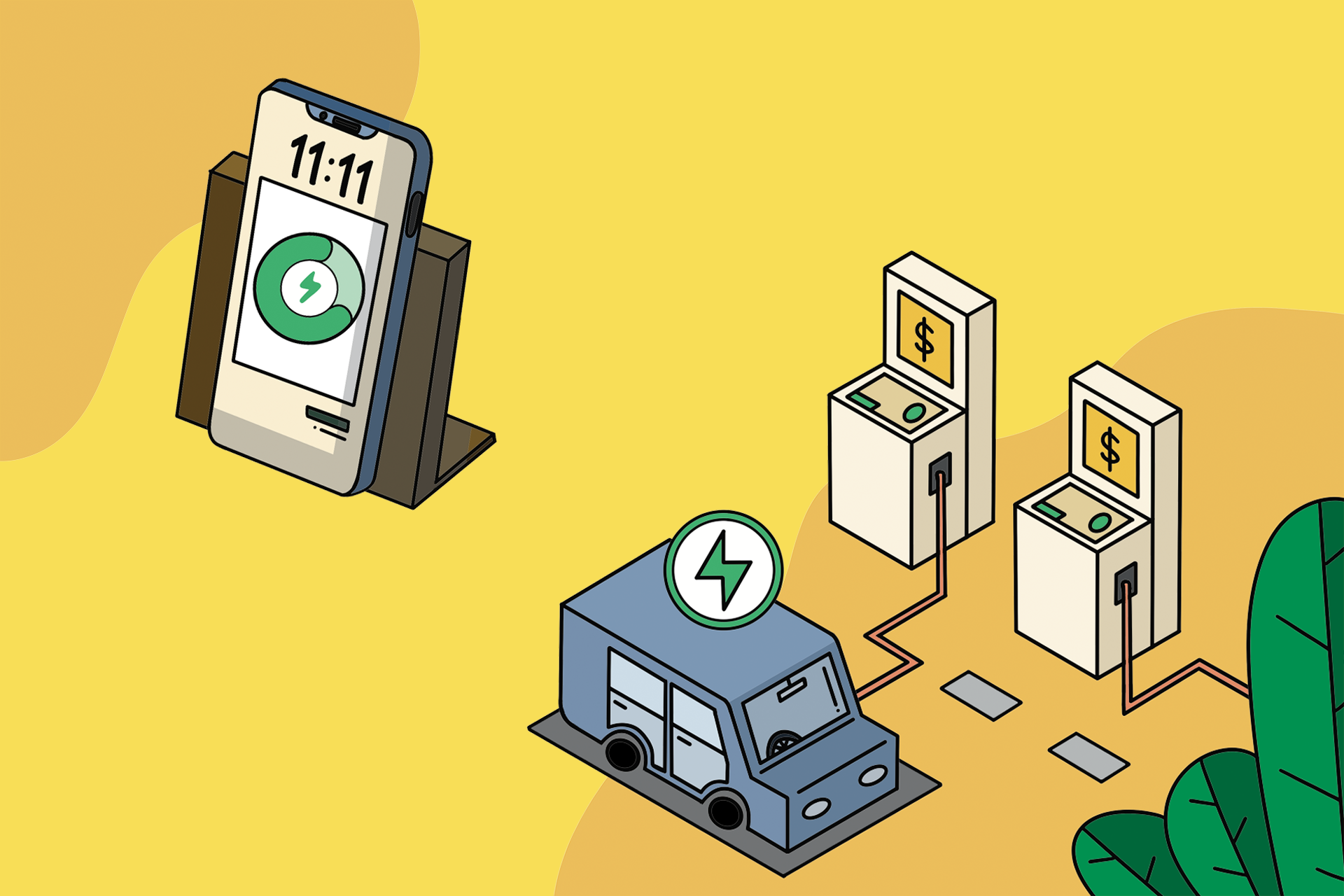Wireless Charging Explained
By Daria Zaitseva

Wireless technology is the new black. Latest technological advances helped us ditch the hassle of cables and enjoy seamless use of devices with wireless charging pads and stands. Have you ever wondered how these chargers work? The answer is much simpler than you might think!
Wireless charging, also called inductive charging, is based on some physical principles of electromagnetism and electromagnetic induction. The first principle to know is Ampere’s law, which implies that an electric current in a conductor generates a magnetic field with a strength proportional to the current. If we pass a current through a solenoid (a helical coil), the solenoid becomes an electromagnet with the north and south poles at either of its ends depending on the current direction.
This is the transmitter coil installed in the charging pad. When the transmitter is plugged in, a current runs through the coil and turns it to an electromagnet. An alternating current (a.c.) with the direction of electron flow reverses regularly can be supplied, so that we get an electromagnet with the two poles switching constantly, creating a changing magnetic field.
Then here comes the second principle: Faraday’s law of electromagnetic induction. Discovered by Michael Faraday in 1831, this law states that a changing magnetic field can induce a voltage called an electromotive force (e.m.f.), which can drive a current to flow through a conductor.
Let’s say we take advantage of this principle and install a receiver coil into the device we want to charge. The coil picks up the changing magnetic field and develop an e.m.f. across it, eventually inducing a current to flow through the device. Voilà, the current is now transmitted wirelessly. As smartphones and watches can only be charged by direct current (d.c.), there is an electrical device called a rectifier to convert the induced a.c. into d.c. by restricting the electron flow to only one direction.
Many people may not know: Wireless charging could be much more than a convenient accessory for your phone. Researchers have long sought a wireless solution to power biomedical devices. Theoretically, magnetic fields can penetrate the skin to induce a current to charge the implanted device [1]. This capability could be a game-changer, eliminating the need of repeated surgeries to replace pacemaker batteries [2], and the infection risk associated with percutaneous wire insertion to power left ventricular assist devices (mechanical pumps for patients with advanced heart failure) [3]. Nevertheless, before the wireless charging technology can be commercialized in biomedical devices, some technical challenges still need to be overcome, such as misalignment between coils and burn injury caused by the high-power transmission [2, 4].
Wireless charging systems could be a future direction for electric cars as well. Mercedez-Benz has already been offering a wireless charging option in a car model back in 2017 [5]. Recently, the leading electric car company Tesla has also expressed interest in developing their own wireless charging technology [6]. However, infrastructural support, such as setting up charging stations with charging pads, is crucial to the promotion of the use of wireless charging. This may explain the general reluctance of car manufacturers to incorporate wireless technology into their products [6]. It is a chicken and egg situation: The motivation of car companies to invest in wireless technology is driven by the demand of electric cars, which, however, is now hindered by the accessibility to public charging.
Although a lot of development is still due, engineers have conceived some futuristic ideas in city planning. Detroit has built the first wireless charging road in the US with electromagnetic coils installed underground for pilot testing [7]. While driving down the 400-meter road, the car battery can be charged through inductive charging. This could be a solution to extend the range of electric vehicles.
This is just a glance at what wireless charging could do. In a desire to make technology better and smarter, developers take on the responsibility to make our lives easier without wires. From homes to high-tech endeavors, more and more devices go wireless. What’s next?
References
[1] Mussivand, T., Miller, J. A., Santerre, P. J., Belanger, G., Rajagopalan, K. C., Hendry, P. J., Masters, R. G., Holmes, K. S., Robichaud, R., Keaney, M., Walley, V. M. & Keon, W. J. (1993). Transcutaneous Energy Transfer System Performance Evaluation. Artificial Organs, 17(11), 940–947. https://doi.org/10.1111/j.1525-1594.1993.tb00407.x
[2] Salloum, W., Ghosson, Y., & Fardoun, A. (2022). Wireless Pacemaker Battery Charger. 2022 IEEE 4th Eurasia Conference on Biomedical Engineering, Healthcare and Sustainability (ECBIOS). https://doi.org/10.1109/ECBIOS54627.2022.9944998
[3] Pya, Y. (2020). Transcutaneous Energy Transmission: Can we do it now? The VAD Journal, 6(2), e2020624. https://doi.org/10.11589/vad/e2020624
[4] Horie, H., Isoyama, T., & Ishiyama, K. (2023). Design of an Innovative Wireless Left Ventricular Assist Device Driven by either Extracorporeal Magnets or an Intracorporeal Battery Pack. ASAIO Journal, 69(2), e73-e79. https://doi.org/10.1097/MAT.0000000000001874
[5] Mercedes-Benz of Silver Spring. (n.d.). Mercedes-Benz, Qualcomm Unveil Wireless Charging for Plug-in Hybrid S-Class. https://news.mercedesbenzsilverspring.net/article/mercedes-benz-qualcomm-unveil-wireless-charging-for-hybrid-s-class
[6] Alake, T. (2024, February 20). Wireless Charging for Electric Cars Is Inching Closer to Reality. Bloomberg. https://www.bloomberg.com/news/articles/2024-02-20/wireless-charging-for-electric-cars-is-inching-closer-to-reality
[7] Paris, M. (2022, January 31). Wireless charging: The roads where electric vehicles never need to plug in. BBC. https://www.bbc.com/future/article/20240130-wireless-charging-the-roads-where-electric-vehicles-never-need-to-plug-in